How It's Made
Building an Ad Engine for Grocery
A Q&A with Vikaram Gupta, Instacart’s Vice President of Ads Engineering
We’re excited to announce that we just welcomed Vik Gupta to Instacart as our first-ever Vice President Engineering, Advertising.
Vik comes to us from Google where he was a VP of Engineering and spent nearly 15 years building and scaling a ton of technologies that many of us interact with every day.

Early on, Vik was one of the first engineers to work on GSuite. He then led the development of Google’s agency-focused advertising product, Search Ads 360; and built best-in-class Ads trust and safety systems. He also oversaw the company’s effort to stop fraudulent ads traffic, where he led the team through a pivot to large scale machine learning.
More recently Vik led efforts on the Local Search engineering team, including making COVID-19 testing centers available on Google Search and Google Maps to users around the world.
At Instacart, Vik will lead the team that’s streamlining and scaling the technologies behind our self-service advertising platform and managed ad products.
We sat down with Vik to talk about transitioning from an individual contributor into an Engineering Manager, radical product rewrites, and (of course) what’s in his cart.
You’ve got a long career that spans some of the biggest names in technology — what are some of the key learnings you’ve gained from each?
I’ve been fortunate to work at some of the most enduring companies in Silicon Valley, including Oracle, Intuit, and Google. I’ve also had the chance to try my hand at a couple of startups. Every environment is different, and I’ve learned so much at each stop.
At Intuit, I was part of the team that built an ahead-of-its-time web-based personal finance product. There, I first got to really understand usability studies: bringing in real-world users so we could study them and really get to know how they used our products. Of course, this is common practice now.
When I joined Google and started working on GSuite, I came to appreciate the awesome power of scale. We had a big ambition to revolutionize how productivity applications worked for business and education users. Even as a new member of the team, I was working on systems that were expected to scale to millions of users. That expectation of scale completely changed how I approached building systems.
In my decade on the Google Ads team, I learned that in order to run a long term profitable ads business, there needs to be a commitment to not just making the systems a little better year after year, but radically better. In Google’s case, this meant that at any given time, 10 or more significant parts of the system were under a full rewrite. I led three of these rewrites, and contributed to countless others. Reimagining systems can be rewarding and super fun.
What made you want to move from an IC role into an engineering management path?
I worked as an individual contributor and tech lead of smaller teams for the first decade or so of my career. In 2007, I transitioned into engineering management, and I quickly realized that I had found my calling.
I love working on hard problems — building great systems to tackle the business need — but I enjoy the process of building teams just as much. I really believe that it’s a privilege to work on problems so large that you need a team to get after them, and I find it incredibly rewarding to bring those teams together. I also really love helping folks figure out what they want to do in their careers; guiding folks with a little of my own experience is particularly fulfilling.
Why did you make the jump to Instacart? After interviewing with the team, did anything surprise you?
I’m so excited to be joining Instacart! There were many aspects that led me to take the leap, but just to name a few:
First, the core product is useful and helpful. The product “aha” moment for me came during the early days of the COVID-19 shelter-in-place orders. My parents live in the Twin Cities. When things closed down there, my brother set them up with weekly deliveries from Instacart. It was an absolute lifeline. My wife and I set up Instacart for our weekly groceries, and it’s been a gamechanger for us too — the convenience is just amazing. And our kids love not having to go to the supermarket!
Second, I was incredibly inspired by the broader advertising opportunity and ability to connect leading and emerging brands directly with customers in the digital aisles of the retailers they love.
Finally, and most importantly, the people: everyone I met was motivated, passionate, and really smart!
What qualities do you look for in an engineer?
I believe that you hire people, not positions. Put another way, I see my role as matchmaker — bringing the intelligence and passion of an engineer together with a hard problem that needs to be solved. So, I look for hunger first and foremost. I also look for folks who are curious and passionate about technology. And since most engineering work happens in teams, I look for folks that are excited to collaborate with others and create things that are bigger than what any one of us could do on our own.
It’s day one — what big project are you excited to tackle?
On day one, I’m just focused on learning the core consumer Instacart business, as well as our ads business. I’m personally excited to figure out how we can create ads that make the customer’s experience even better. I really like that Instacart has leaned into building a search ads business. Thinking longer term, I am dreaming about how to bring more inspirational content into the ads.
Lastly, what’s always in your cart?
With two boys at home, it’s a combination of what my wife and I call “grow food” — chicken, milk, yogurt, spinach and more … along with some fun treats like dark chocolate!
Interested in learning more about Engineering at Instacart? Head over to our Tech blog.
Want to work with Vik? We’re hiring! Check out our careers page to see our current Engineering openings.
Most Recent in How It's Made
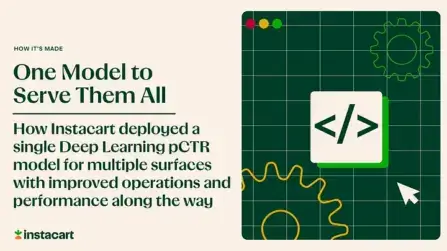
How It's Made
One Model to Serve Them All: How Instacart deployed a single Deep Learning pCTR model for multiple surfaces with improved operations and performance along the way
Authors: Cheng Jia, Peng Qi, Joseph Haraldson, Adway Dhillon, Qiao Jiang, Sharath Rao Introduction Instacart Ads and Ranking Models At Instacart Ads, our focus lies in delivering the utmost relevance in advertisements to our customers, facilitating novel product discovery and enhancing…
Dec 19, 2023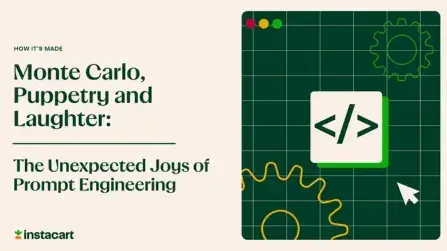
How It's Made
Monte Carlo, Puppetry and Laughter: The Unexpected Joys of Prompt Engineering
Author: Ben Bader The universe of the current Large Language Models (LLMs) engineering is electrifying, to say the least. The industry has been on fire with change since the launch of ChatGPT in November of…
Dec 19, 2023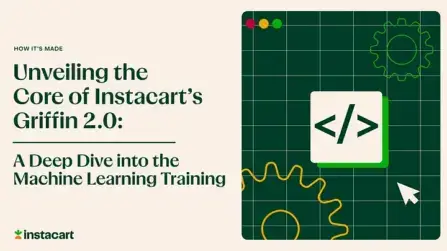
How It's Made
Unveiling the Core of Instacart’s Griffin 2.0: A Deep Dive into the Machine Learning Training Platform
Authors: Han Li, Sahil Khanna, Jocelyn De La Rosa, Moping Dou, Sharad Gupta, Chenyang Yu and Rajpal Paryani Background About a year ago, we introduced the first version of Griffin, Instacart’s first ML Platform, detailing its development and support for end-to-end ML in…
Nov 22, 2023

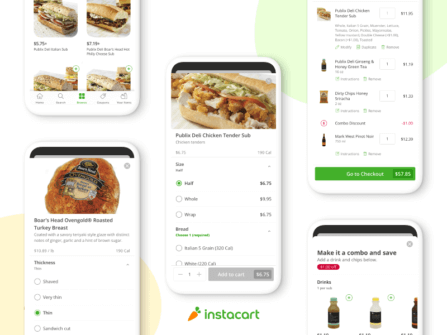 Building Instacart Meals
Building Instacart Meals 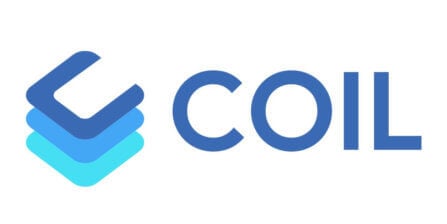 Introducing Coil: Kotlin-first Image Loading on Android
Introducing Coil: Kotlin-first Image Loading on Android  7 steps to get started with large-scale labeling
7 steps to get started with large-scale labeling 
